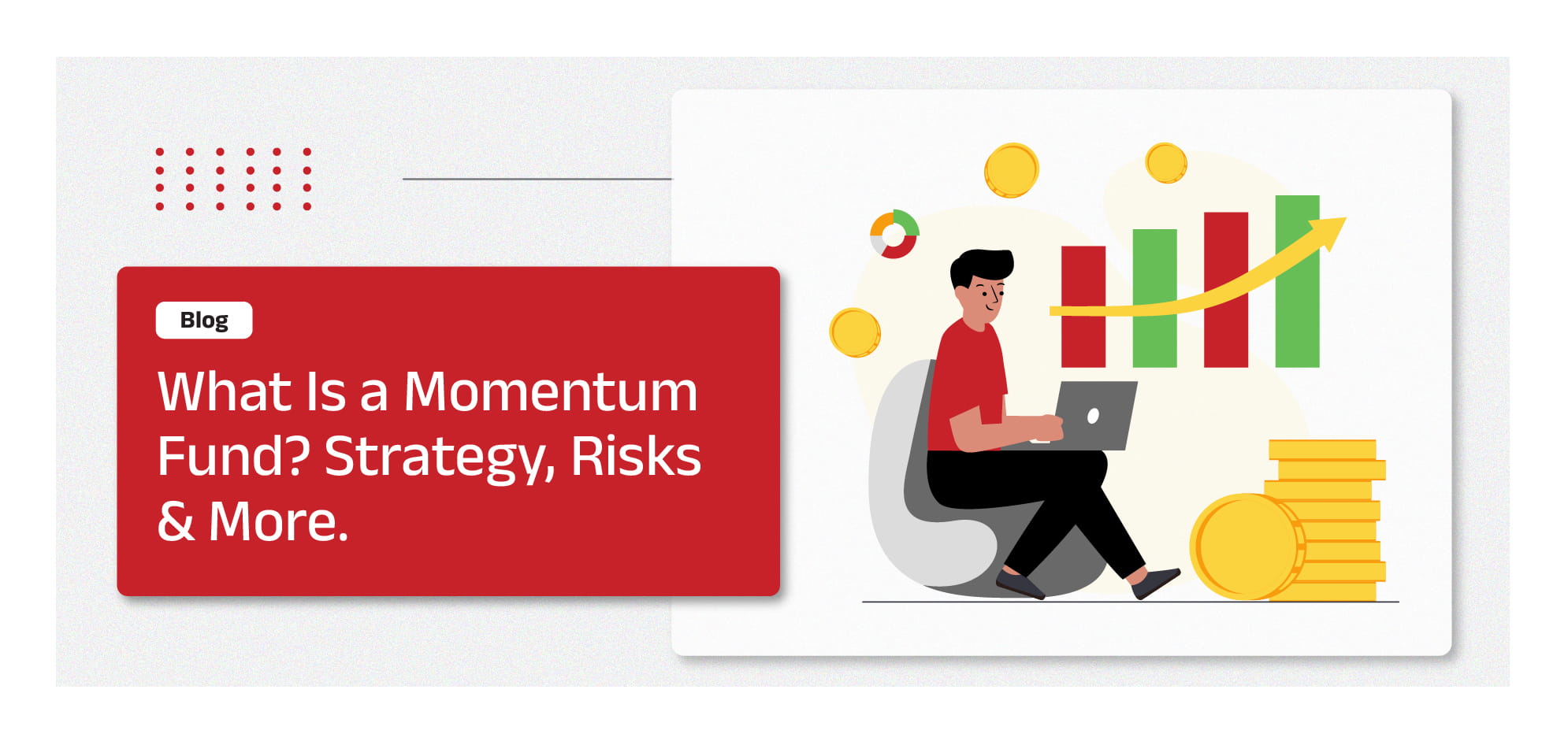-
Our Products
Our FundsFocus Funds
-
Self Care
Self-ServiceFind InformationWays To TransactPartner Solutions
-
Downloads
- Learnings
- About Us
-
More
-
Shareholders
-
Shareholders
-
Updates
-
-
SIP Calculators
- Back
-
Shareholders
What are Momentum Funds?

Jul 01, 2025
10 min
0 Rating
Do you also stumble upon the term momentum fund while exploring mutual fund strategies? An easy way to understand it: the strategy behind momentum funds is somewhat similar to betting on the best runner. These funds pick stocks that are already doing well, with the hope that those high-performing stocks will continue to perform in the short to medium term.
Here, this blog brings deep insights that help you decide whether momentum funds are a good fit for your investments.
What is a Momentum Fund?
A specific type of mutual fund that prefers investing in stocks that go uphill in price over a specific period. The idea? Stocks that have performed well recently are likely to keep performing.
Key traits:
Focus on recent winners
Short to medium-term horizon
Quantitative analysis over fundamental research
May be actively or passively managed
These funds rely on tools like trading volume, historical price trends, and technical indicators to pick stocks.
Momentum Fund vs Traditional Funds
Criteria |
Momentum Fund |
Traditional Equity Fund |
Investment Style |
Trend-based, short to medium-term |
Value/Growth-based, long-term |
Stock Selection |
Based on recent price trends |
Based on fundamentals (P/E, ROE, etc.) |
Management Style |
Active or passive |
Typically active |
Risk Profile |
Higher due to volatility |
Varies |
Momentum ETF & Smart Beta Game
You may also come across the term momentum ETF. They are exchange-traded funds that are the same as a momentum-based index. One example is the Nifty 200 Momentum 30 Index.
What is the Nifty 200 Momentum 30 Index?
-
It selects 30 stocks from the Nifty 200 based on their 6 and 12-month price performance.
-
Weights are given using a factor tilt method: momentum score × free-float market cap.
-
Stocks are capped at 5% weight during rebalancing.
-
Rebalanced twice a year (June and December).
This index represents a rules-based strategy and is often tracked by funds like the UTI Nifty 200 Momentum 30 Index Fund.
Why Consider Momentum Funds?
Momentum funds can be appealing for several reasons:
Potential for Higher Returns: They tend to perform well in bull markets.
Objective Strategy: Based on numbers, not emotions.
Dynamic Portfolio: Active rebalancing to chase trends.
Diversification: Not just market cap-based.
Ideal for Risk-Takers: If you can stomach short-term volatility, these funds could be worth considering.
When Do Momentum Funds Outperform?
Understanding when these funds shine can help you set realistic expectations. Momentum funds typically perform best during the following:
Sustained Bull Markets: When the overall market is on an upward trend, the probability of riding winning stocks is higher.
Clear Sectoral Leadership: When one or two sectors dominate the market, momentum funds quickly align with them to capture returns.
Post-Correction Recoveries: After a market dip, certain stocks bounce back faster, and momentum funds are built to catch those.
However, they may underperform in:
Highly Volatile or Sideways Markets: Frequent whipsaws in prices can cause more churn and lower returns.
Early Bear Market Phases: Since momentum relies on past winners, those stocks may be hit hardest when the trend reverses.
Knowing the market mood can help you time your entry better, though predicting it is never foolproof.
But Be Warned: There Are Risks
Momentum investing is not all sunshine and gains. Here are the pitfalls:
High Volatility: The very nature of short-term investing comes with price swings.
Bear Markets Hurt: These funds often underperform in sideways or bearish markets.
High Turnover and High Costs: Active management may increase expense ratios and transaction costs.
Tax Implications: Frequent trading can increase your tax liability.
Over-Reliance on Trends: Trends can reverse quickly, and if you're not fast enough, you may fall.
Who Should Invest in Momentum Funds?
You might consider a momentum fund if:
You are comfortable with short-term price swings.
You actively monitor your investments.
You understand market cycles.
You are looking for diversification through a tactical strategy.
Avoid these funds if you are risk-averse, need consistent income, or are investing for a short-term goal like a vacation or emergency fund.
Momentum Investing vs Index Investing
Let’s take a quick look at how momentum investing is different from index investing.
Feature |
Momentum Fund |
Index Fund (e.g., Nifty 50) |
Objective |
Chase short-term trends |
Mirror a market benchmark |
Strategy |
Factor-based (Momentum) |
Passive, broad-based |
Risk Level |
Higher |
Moderate |
Return Potential |
High (with volatility) |
Market-average returns |
Who It Suits |
Aggressive investors |
Beginners, conservative investors |
Practical Tips Before You Invest
Before taking the leap into a momentum fund, consider these practical steps:
Set Clear Goals: Are you investing for growth, diversification, or tactical returns?
Start with SIPs: If unsure about timing, Systematic Investment Plans can reduce entry risk.
Avoid Herd Mentality: Just because everyone’s talking about a trending fund doesn’t mean it’s right for you.
Check Fund Mandate: Ensure the fund sticks to a momentum strategy and doesn’t drift into other styles.
Balance Your Portfolio: Pair momentum funds with more stable assets like index funds or bonds for cushion during downturns.
Treat momentum funds as a booster shot, not the whole treatment. They can enhance your returns, but only when backed by research and self-awareness.
Final Thoughts
Momentum funds are like catching a wave. It can be fun and thrilling if you time it right, but risky if the wave crashes.
They are not for everyone, but if you enjoy tracking the markets and want to bet on rising trends, they can add an interesting layer to your portfolio. Start small, watch closely, and diversify wisely. Remember: momentum is about movement, not magic.
As always, invest based on your risk appetite and financial goals.
Mutual Fund investments are subject to market risks, read all scheme related documents carefully.





 1800-270-7000
1800-270-7000



